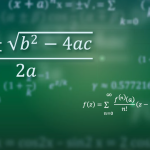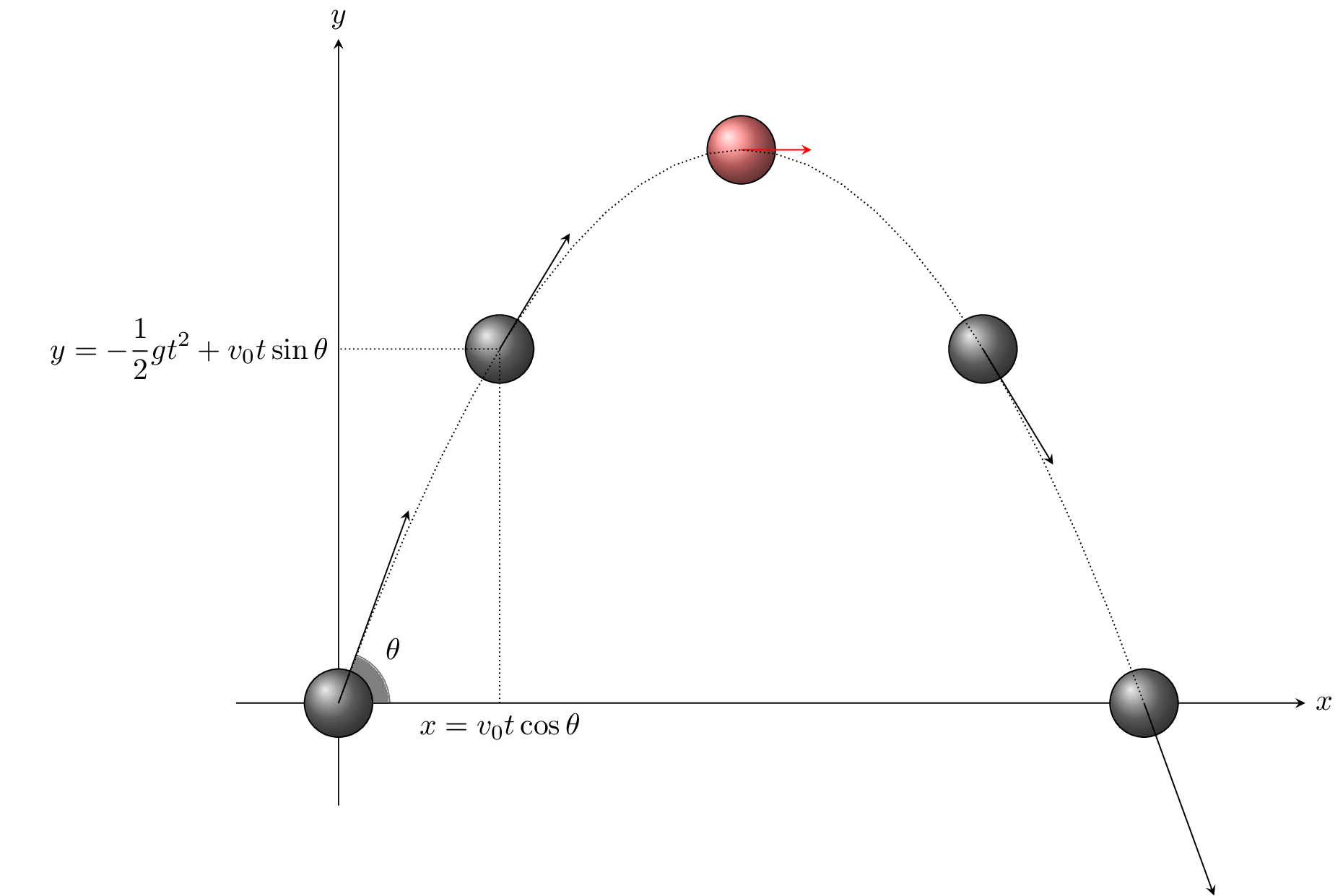You can set the initial velocity and launch angle. \DrawBall, have a value between 0 and 1 as an argument shows the ball and its velocity.
Edit and compile if you like:
\documentclass{standalone}
\usepackage{tikz}
\usetikzlibrary{calc}
\begin{document}
\def\angle{70} % launch angle
\def\v{6} % initial velocity
\def\g{9.8} % gravitational acceleration
\def\r{0.1} % ball radius
\begin{tikzpicture}[
scale=4,
axis/.style={-stealth},
]
\pgfmathsetmacro{\tGround}{{2*\v*sin(\angle)/\g}}
\newcommand{\Ballx}[1]{{\v*#1*\tGround*cos(\angle)}}
\newcommand{\Bally}[1]{{-0.5*\g*#1*#1*\tGround*\tGround+\v*#1*\tGround*sin(\angle)}}
% Axis
\draw[axis] (-0.3,0) -- ($1.2*(\Ballx{1},0)$) node[right] {$x$};
\draw[axis] (0,-0.3) -- ($1.2*(0,\Bally{0.5})$) node[above] {$y$};
% Angle
\filldraw[opacity=0.5] (\r*1.6,0) arc(0:\angle:\r*1.6)node[opacity=1,midway,above right]{$\theta$} -- (0,0) -- cycle;
% Ball
\newcommand{\DrawBall}[2][black]{
\filldraw[ball color=#1!50!] (\Ballx{#2},\Bally{#2}) circle(\r);
\draw[-stealth,#1] (\Ballx{#2},\Bally{#2})
--++({0.1*\v*cos(\angle)}, {-0.1*\g*#2*\tGround + 0.1*\v*sin(\angle)}); % velocity
}
\foreach \t in {0,0.2,0.8,1} {
\DrawBall[black]{\t}
}
\draw[densely dotted] (\Ballx{0.2},0) node[below] {$x=v_0t\cos\theta$}
-- (\Ballx{0.2},\Bally{0.2})
-- (0,\Bally{0.2}) node[left] {$\displaystyle y=-\frac{1}{2}gt^2+v_0t\sin\theta$};
\DrawBall[red]{0.5}
% Trajectory
\draw[samples=256,densely dotted,domain=0:1,variable=\t] plot(\Ballx{\t},\Bally{\t});
\end{tikzpicture}
\end{document}


